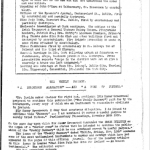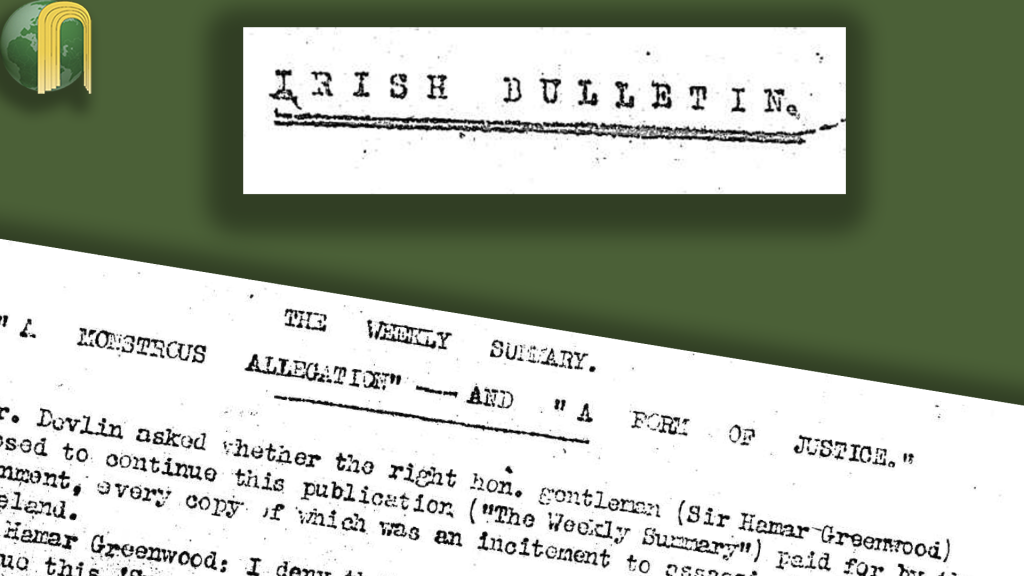In November 1920 Sir Hamar Greenwood, in the course of the discussions in the British House of Commons described the Irish Bulletin newspaper as the organ of the ‘murder gang’ claiming that it espoused outrage and sympathised with murder.
This may have been true in some respects but it did condone the murder of innocent civilians and the damage to property. On the contrary, it actively engaged in reporting the crimes, which were being committed by the British military in Ireland. In late November 1920 it reported on one day’s incidents in Ireland, which included the following: The murder of Martin Walsh, aged 62, a lunatic who was shot dead during a raid on Clare Lunatic Asylum; the wounding of John O’Hara in Tubbercurry, county Sligo (wrongly attributed to Roscommon in the newspaper); the attack on the offices of the Freeman’s Journal in Westmoreland Street, Dublin which was partially destroyed; the attack on the Sinn Fein bank on Harcourt Street, Dublin; the burning of three farmhouses in Kinvara, county Galway; the burning of crops, farmhouse, business premises in mid-Cork following an ambush at Johnstown; and the widespread looting of shops by the military which took place in Tuam, Dublin City, Thurles, Crossakiel (Meath) and Cork City. Of course the Cork attacks were largely the result of the reprisals which followed the Kilmichael ambush and the subsequent Burning of Cork which will feature in a later post. Source : Irish Bulletin, 30 November 1920, page 1. IrishBulletin30Nov
IrishBulletin30Nov
